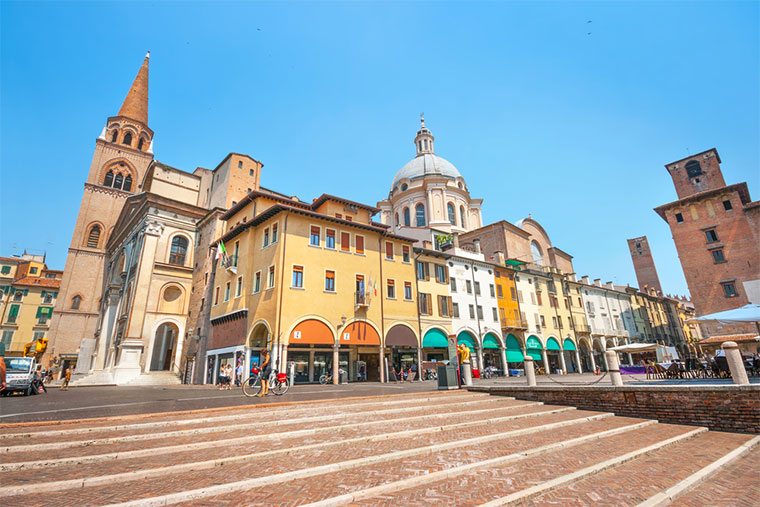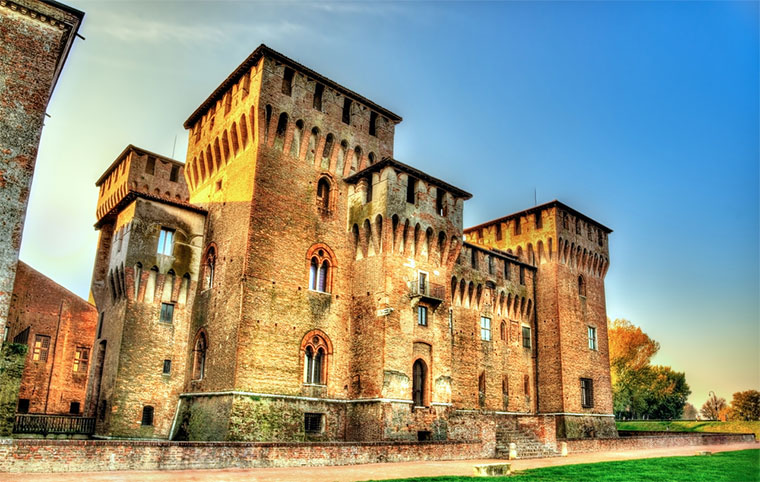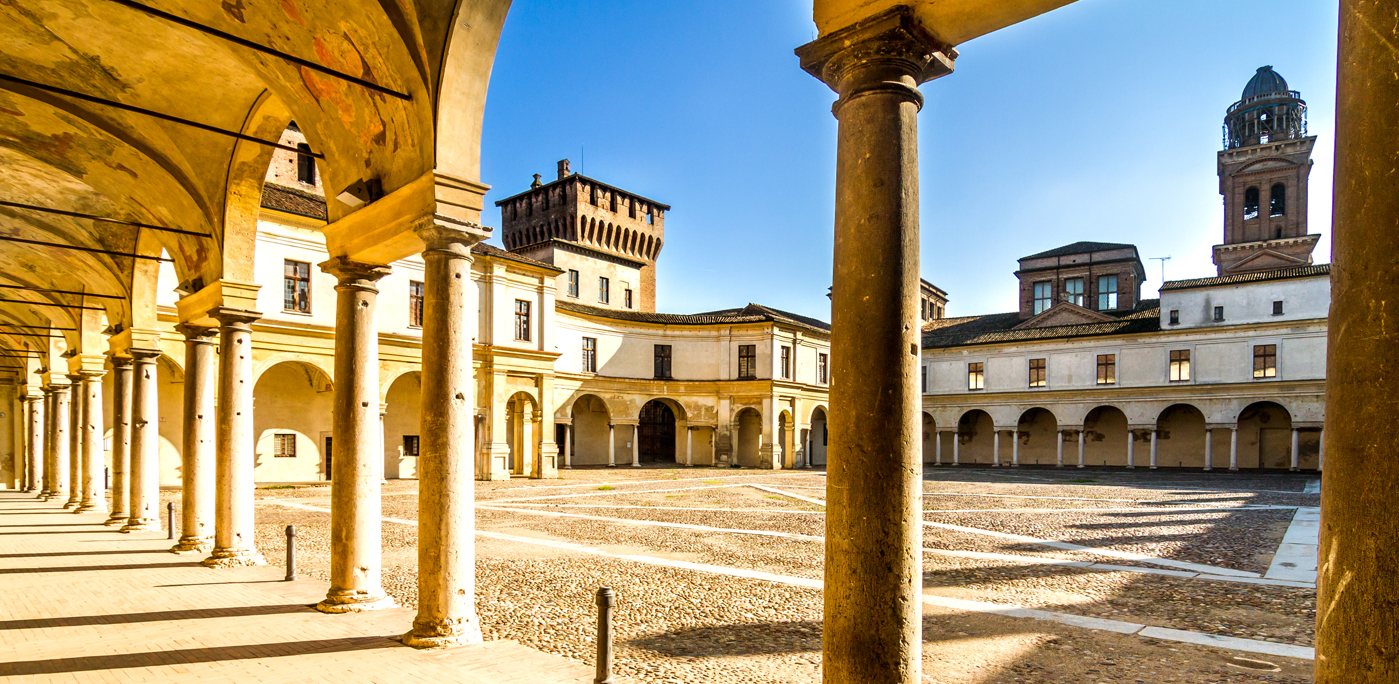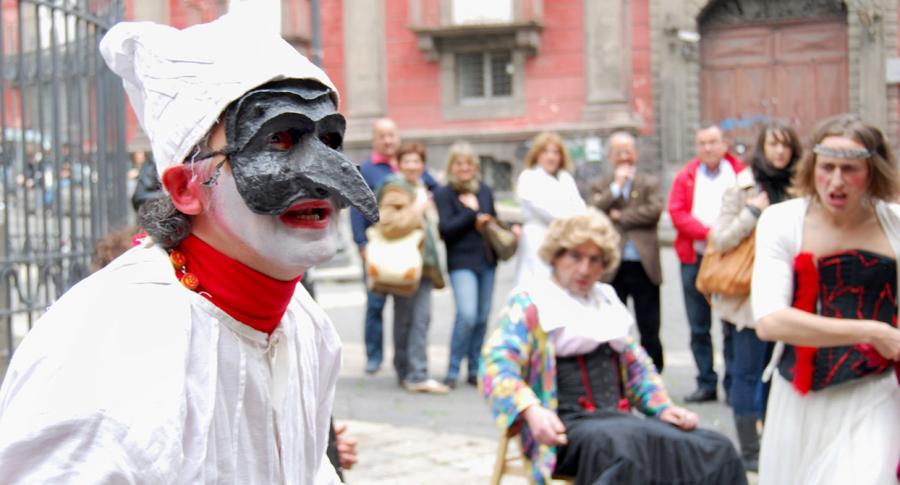Before this year is over, we must talk about Mantua. Every year the Italian government chooses a city to be the Italian Capital of Culture, during which the designated town enjoys the spotlight and hosts various cultural events to celebrate its past and its attractions. This year that city has been Mantua.
Mantua lies in the lower part of the region of Lombardy, in the valley of the river Mincio. The great Roman poet Vergil was born here, as he wrote in his famous lines: ”Mantua me genuit, Calabri rapuere….” (Mantua gave me birth, Calabria stole me away…). Mantua is one of southernmost towns of the vast Po valley, and is surrounded and defended by three lakes formed by the Mincio. Mantua contains remarkably varied architecture, with buildings going back to the Roman, Byzantine and medieval periods, and to the splendid masterpieces of the Renaissance and the Baroque periods. It is not a large town, but it could be called a literal concentration of wonders. As Mantua is near and well connected to other major cities both by train and by the Autostrada, there is no excuse not to go visit it! Especially since, in 2008, Mantua was nominated by UNESCO as a part of the World Heritage treasures. Mantua it is not far from my hometown of Milan, so I have visited it several times: there is so much of interest to see that every time I discovered more.

Mantua’s first inhabitants were the Etruscans. Then came the Romans. But now, when you say Mantua, you think Gonzaga, the family that managed to gain supremacy in the territory, and that through a dynastic marriage also gained a large territory outside Lombardy, Monferrato in Piedmont, thus becoming one of the most important dynasties in Italy. From the fourteenth century on, the Gonzaga dynasty enriched the town with art works. The various Gonzaga rulers had taste, money, and an uncanny intuition. So they employed the greatest artists of their times: Leon Battista Alberti, Pisanello, Andrea Mantegna, Giulio Romano, Rubens, just to mention a few. The Gonzaga spent fortunes on paintings and sculptures, and created a vast art collection that rivaled the ones of the Pope and of the Medici family. Two artists in particular are connected to the court of Mantua: the first is Andrea Mantegna, and the second Giulio Romano. The two main attractions are the ducal palaces: the first is the Duke’s Palace, within the walls of the medieval city, and the second is the Palace del Te, outside the walls. I will start with the oldest.

The meandering ducal palace is a large labyrinth of some five hundred rooms, built at different times and in different styles. Dating back to the 13th century, it forms a huge, interconnected complex of buildings, towers, courts, gardens and passage ways that were added as time passed. This palace contains magnificent frescoes by Andrea Mantegna, honoring the Gonzaga family. Mantegna, the innovative master of perspective and foreshortening, was insistently courted by the Gonzaga, and finally came to Mantua, where he was appointed court painter in 1460 at a vertiginous salary. Here he executed the stunning frescoes in the Camera degli Sposi, the Wedding Room. Many of the tourists come to Mantua especially to see these frescoes.

On the North wall of this hall you see a stately court scene, where in an illusionistic indoor setting you see the family, all around Ludovico III Gonzaga and his wife Barbara of Brandenburg, meeting visiting dignitaries. Of particular interest is the figure of the court dwarf, who seems to be looking at the viewer with her piercing eyes. Magnificently portrayed are the rich costumes of the time, with the men wearing stockings of different colors on each leg. On the west wall, there is a meeting scene, in which, in an outdoor illusionistic landscape, one sees the meeting of Ludovico with his son, just consecrated Cardinal Francesco, and the Holy Roman Emperor Fredrick III and King Christian 1st of Denmark. But the pièce de resistance is the ceiling with its magnificent trompe l’oeil and foreshortening effects. This technique is called “dal sotto in su,” that is, from down to up, or worm’s eye vision, which creates a stunning tri-dimensional effect. This fresco punches open the ceiling to reveal the blue sky. It represents the opening of a well with a balustrade all around, from which people curiously peep down, with putti frolicking around it, with birds and angels hovering, all painted with the foreshortening technique Mantegna discovered and was so renowned for. A bravura piece by Mantegna, who also shows here an uncharacteristic sense of humor (the art critic Vasari described him as somewhat cantankerous), as he includes the famous detail of a large wooden flower tub, precariously held up by a thin stick and hovering over the people looking up at the illusionistic opening. I remember I got a terrible stiff neck staring at it, almost wondering when this tub would suddenly fall down on us! Such is the visual genius of Mantegna, who was so important in the artistic development of Mantua that he was buried in the Basilica of his patron saint, Sant’Andrea.

In the town, everywhere, we can find traces of the lives of the famous noble ladies of the dynasty. We can breathe the ambition of those lords of yore, and the efforts of the court ladies to outdo one another. Isabella d’Este, who married Francesco II and had seven children with him, is one of the most important women of the Italian Renaissance. One of the great attractions of the ducal castle is her famous “studiolo,” or office, a magnificent room where she conducted business, practiced diplomacy, and wrote incessantly: we have more than twenty-eight thousand letters of hers! We can see her in a drawing by Leonardo, where she appears with long flowing hair and a low cut dress. For several years, while Francesco II was at war and then imprisoned in Venice, she was the Regent. It was said that when he was finally freed the duke was jealous that his wife had ruled over Mantua better than he did.
This year Mantua has witnessed numerous cultural events, due to its being the Capital of Culture 2016, events going from music, to painting, to festivals, to lectures and to manifestations of every kind. Mantua has been pampered, caressed, re-valued. But alas, be it as it may, one can never forget the tragic loss of the inestimable Gonzaga art collection, a large number of masterpieces painstakingly picked and dearly purchased by six dynasties of Gonzaga rulers, and gathered in what was called the Celeste Galeria, the Celestial Gallery. It included paintings by Mantegna, Andrea del Sarto, Raphael, Giulio Romano, Titian, Tintoretto (both Domenico and Jacopo), Correggio, Guido Reni, Perugino, Caravaggio….. just to name a few. But then came Duke Vincenzo II (1594-1627), the son of Vincenzo I and of Eleonora de’ Medici, who was the last duke of the direct Gonzaga line. He inexplicably sold the bulk of the Gonzaga art collection to Charles I, King of England, for a ridiculously low sum of money: a senseless act for which the people of Mantua have never forgiven him. Thankfully, during the times of Duke Vincenzo I and of Duke Federico all these legendary art works had been carefully inventoried, which helped trace them as they travelled the world after their ill-advised sale and subsequent diaspora. When as a teen exchange-student I visited London for the first time, I was surprised to find that the museums there contained so many masterpieces of our Italian art.
In the times of Duke Federico II (1500-1540) things were quite crowded in the Palazzo Ducale. The Duke was married to Margherita Paleologa, with whom he had seven children, and his mother Isabella was still living. (Mother and son actually died in the same year). And then there was “La bella Boschetta,” the duke’s mistress, Isabella Boschetti, with whom he sired two children. A difficult situation. So Federico commissioned famous Mannerist architect-painter Giulio Romano to create an alternate castle, a “fun” palace, outside the walls of the old Mantua, a palace where his beloved mistress could play court outside the court. It is named the Palazzo del Te, Te pronounced as if the “e” had an accent on it. Of this incredible palace, inspired by the Duke’s overwhelming passion turned into solid stone, I will write in my next article. Stay tuned!






























